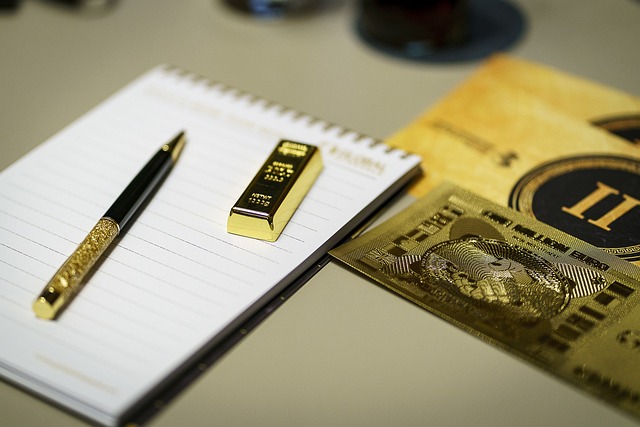Gold IRAs and ETFs each offer unique ways to incorporate gold into a diversified retirement portfolio. A goldiracompanies.substack.com goldiracompanies.substack.com goldiracompanies.substack.com goldiracompanies.substack.com goldiracompanies.substack.com goldiracompanies.substack.com gold ira allows for direct investment in physical gold, silver, platinum, and palladium within a tax-advantaged account, offering a tangible asset as a hedge against economic volatility. In contrast, gold ETFs provide indirect exposure to the price of gold, traded on stock exchanges with potential benefits like liquidity and ease of transaction. When choosing between these two options, consider your investment goals, risk tolerance, and management style. Factors such as account setup fees, customer service quality, investment minimums, storage security, and educational resources provided by Gold IRA companies like Birch Gold, Augusta Precious Metals, and Goldco should be evaluated to determine which aligns best with your long-term financial strategy. Investors should delve into the differences between a Gold IRA and gold ETFs to make an informed decision that complements their retirement planning objectives.
Navigating retirement investment strategies, individuals increasingly explore diversification with precious metals. A Gold IRA can be a prudent addition to one’s retirement portfolio, offering a hedge against inflation and market volatility. This article delves into the best Gold IRA companies, comparing Gold IRAs and ETFs to help you make informed decisions. We’ll explore the nuances of these financial instruments, highlight top providers, and provide insights into the benefits and considerations for physical gold and Gold ETF investments within an IRA framework. Whether you’re a seasoned investor or new to precious metals, this comprehensive guide will equip you with the knowledge to diversify your retirement savings effectively.
- Understanding Gold IRAs and ETFs: A Comparative Analysis
- Top Gold IRA Companies: A Comprehensive Overview
- The Advantages of Investing in Physical Gold vs. Gold ETFs within an IRA
- Key Factors to Consider When Choosing a Gold IRA Provider
- Best Gold IRA Companies: Detailed Reviews and Ratings
- Strategies for Diversifying Your Retirement Portfolio with Gold IRAs and ETFs
Understanding Gold IRAs and ETFs: A Comparative Analysis

Gold IRAs and Exchange-Traded Funds (ETFs) offer distinct paths for investors to diversify their retirement portfolios with gold. A Gold IRA, or Individual Retirement Account, allows for direct ownership of physical gold, silver, platinum, and palladium, providing a tangible asset within your retirement savings. This form of investment can act as a hedge against inflation and economic uncertainty, offering potential benefits during turbulent financial periods. On the other hand, Gold ETFs represent a share in a portfolio of physical gold held by the fund manager. They provide exposure to gold prices without the need for physical storage or handling. Investors in Gold ETFs can benefit from the liquidity and ease of trading on stock exchanges, as well as the ability to invest in fractions of an ounce of gold.
Comparing a Gold IRA to Gold ETFs involves considering factors such as control, liquidity, and cost. With a Gold IRA, investors have direct influence over their investment, including the type and amount of precious metals held. This control comes with responsibilities like secure storage arrangements. In contrast, Gold ETFs offer indirect exposure to gold markets and are subject to market trading hours and fund management fees. The choice between a Gold IRA and Gold ETFs hinges on individual investment goals, risk tolerance, and the level of hands-on involvement one prefers. Investors should weigh the advantages of owning the physical asset against the convenience and lower cost of gold ETFs to make an informed decision that aligns with their long-term retirement strategy.
Top Gold IRA Companies: A Comprehensive Overview

When considering investment in precious metals for retirement, a Gold IRA stands out as a significant financial vehicle. Unlike traditional Individual Retirement Accounts that deal with paper assets, a Gold IRA allows individuals to diversify their portfolios with physical gold, silver, platinum, and palladium coins or bars that are approved by the Internal Revenue Service (IRS). This tangible asset approach can serve as a hedge against inflation and market volatility. When contrasting Gold IRAs with ETFs, it’s evident that while both offer exposure to gold prices, a Gold IRA provides direct ownership of the precious metal, potentially offering more control and a real asset in hand.
Selecting the best Gold IRA company is a critical decision for investors. Top contenders in the industry are known for their robust service offerings, competitive fees, and an extensive selection of IRS-approved precious metals. These companies facilitate the process from account setup to acquisition, storage, and even liquidation of assets. They ensure compliance with all regulations and provide customers with peace of mind through fully insured and audited storage facilities. When comparing Gold IRA providers, factors such as their reputation, customer service, and the range of investment options become paramount. Investors should conduct thorough research and consider reviews, fee structures, and the company’s track record to make an informed decision that aligns with their retirement goals and financial strategy.
The Advantages of Investing in Physical Gold vs. Gold ETFs within an IRA

When considering a Gold IRA, investors are often faced with a choice between physical gold and gold ETFs (Exchange-Traded Funds). Each option presents its unique set of advantages. Physical gold has long been a symbol of wealth preservation and a hedge against inflation and economic uncertainty. Owning actual gold within an IRA can provide a tangible asset that may appreciate in value independently of the stock market’s performance. The actual possession of gold can offer investors a direct investment in a commodity with intrinsic value, which some view as more secure during times of financial volatility. Moreover, with physical gold, investors might have the option to take delivery of their gold upon reaching the age of 59½ or earlier under specific conditions, offering a liquid asset that can be passed down through generations.
On the other hand, Gold ETFs within an IRA offer a more accessible and diversified investment. These funds track the price of gold and provide exposure to the precious metal market without the need for physical storage or handling. Investors benefit from the liquidity of trading ETFs like stocks on an exchange, which can be advantageous for those seeking more flexibility in their investments. Gold ETFs also often come with lower fees compared to physical gold storage costs, and they eliminate the concerns associated with insuring and safely storing a physical asset. Additionally, ETFs provide broader market exposure as they are not limited to the amount of gold held physically; they can represent a fractional interest in gold holdings, allowing for greater investment diversification within an IRA portfolio. Both options have their merits, and the choice between physical gold and gold ETFs within an IRA should be made based on individual investment goals, risk tolerance, and the desired level of hands-on management. Investors looking into a Gold IRA should thoroughly research and consider the specific advantages each option brings to their retirement portfolio.
Key Factors to Consider When Choosing a Gold IRA Provider

When exploring the best Gold IRA companies, investors should carefully evaluate several critical factors to ensure their retirement savings are managed prudently. One key consideration is the variety of precious metals available within your Gold IRA. Unlike ETFs that focus on paper-based assets, a reputable Gold IRA provider should offer a selection of physical gold, silver, platinum, and palladium coins or bars, allowing for diversification and potential hedge against inflation and market volatility. Another important aspect is the company’s reputation and reliability. Research the track record of each provider, including customer reviews and any past legal issues, to gauge their trustworthiness. Additionally, consider the provider’s storage options; some offer secure, segregated storage within an insured depository, which can provide peace of mind that your assets are safe.
Furthermore, the cost structure is a significant factor when comparing Gold IRA providers versus ETFs. Investors should scrutinize any fees associated with account setup, administration, and transaction costs, as these can erode returns over time. Transparency in fee structures is crucial, with some providers offering competitive pricing models that make them more cost-effective than others. Finally, the level of customer service and support provided by the Gold IRA company should not be underestimated. A provider with a responsive support team can offer guidance throughout the investment process, from initial setup to ongoing account maintenance. This personalized attention is a key differentiator between a Gold IRA and an ETF, where investors may feel like just another account number. By considering these factors carefully, investors can make an informed decision that aligns with their retirement goals and risk tolerance.
Best Gold IRA Companies: Detailed Reviews and Ratings

When considering a Gold IRA, investors often compare it with Gold ETFs to determine the best investment for their retirement savings. Both options offer exposure to gold, but they differ significantly in terms of liquidity, storage, and investment minimums. Gold IRA companies specialize in self-directed retirement accounts that allow for physical gold, silver, platinum, and palladium coins or bars as investments within a tax-advantaged retirement plan. These companies provide a range of services from account setup to diversification strategies, with a focus on securing physical assets. On the other hand, Gold ETFs are traded on stock exchanges and offer gold exposure without the need for physical storage. They are highly liquid, but they simulate gold ownership rather than providing actual gold holdings.
To assist investors in making informed decisions, thorough reviews and ratings of the best Gold IRA companies are crucial. These evaluations consider factors such as fee structures, customer service, investment selection, account minimums, and the security of their storage solutions. Companies like Birch Gold, Augusta Precious Metals, and Goldco stand out for their comprehensive offerings, educational resources, and customer support. Investors should look at detailed reviews that compare these aspects against their personal investment goals and risk tolerance. By doing so, they can choose between a Gold IRA or Gold ETFs with confidence, ensuring their retirement portfolio aligns with their financial objectives and market conditions.
Strategies for Diversifying Your Retirement Portfolio with Gold IRAs and ETFs

When considering strategies for diversifying your retirement portfolio, incorporating precious metals such as gold can be a wise move. A Gold IRA allows investors to own actual gold, silver, platinum, and palladium within their Individual Retirement Account, offering a tangible asset to balance against stock market volatility. To integrate gold into your IRA without physically handling the metal, exchange-traded funds (ETFs) like those tracking the price of gold can be a suitable alternative. These Gold ETFs provide exposure to gold prices through traditional stock market transactions. The choice between a Gold IRA and gold ETFs depends on various factors, including investment goals, risk tolerance, and management preferences.
For those favoring direct ownership of physical gold, a Gold IRA can offer a hands-off approach to asset diversification while adhering to IRS regulations. This type of IRA typically involves purchasing allocated or unallocated gold bars or coins that are stored in an IRS-approved depository. On the other hand, gold ETFs provide liquidity and simplicity; investors can buy and sell shares like any other stock during market hours. Both options have their merits: Gold IRAs offer a direct investment in the metal with potential benefits during inflationary periods, while gold ETFs provide a more accessible and diversified play on gold prices. Investors should carefully consider their long-term financial objectives, conduct thorough research, and consult with financial advisors to determine the best approach for incorporating gold into their retirement portfolios via Gold IRAs or gold ETFs.
When exploring the landscape of retirement savings, investing in a Gold IRA can be a strategic move for diversification. This article has delved into the nuances of Gold IRAs and ETFs, highlighting the distinctions between these investment vehicles through comparative analysis. We’ve examined the top Gold IRA companies, providing a comprehensive overview to guide your decision-making process. The advantages of incorporating physical gold versus gold ETFs within an IRA have been discussed, offering insights into the benefits each option presents. Key factors for selecting a reputable Gold IRA provider were identified, ensuring readers are well-equipped with the necessary criteria. Our detailed reviews and ratings of the best Gold IRA companies provide valuable information to consider as you navigate this investment frontier. Ultimately, integrating gold into your retirement portfolio can be a prudent step, bolstering its resilience against market volatility. By carefully evaluating the options presented, investors can make informed decisions that align with their financial goals and risk tolerance.
